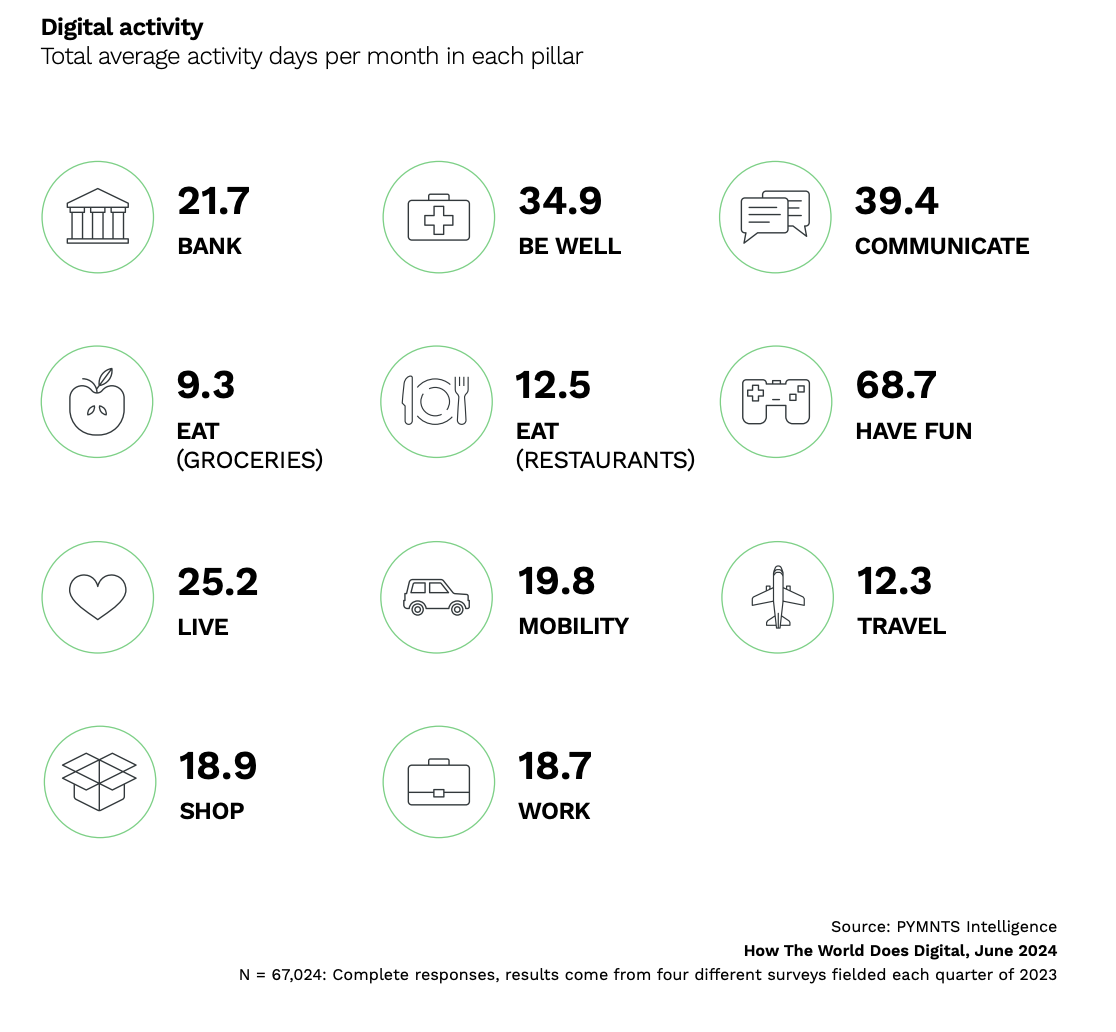
As consumers turn to digital platforms to meet their food needs, their eCommerce adoption of restaurants is greater than for grocery.
The 2024 edition of PYMNTS Intelligence’s “How the World Does Digital” examined the digital behavior of 67,000 consumers across 11 countries that make up approximately half of the world’s gross domestic product.

The study found that for restaurants, consumers averaged 12.5 activity days per month — that is, they engaged in digital activities related to restaurants 12.5 days in that period. In contrast, when it comes to grocery, they averaged only 9.3 activity days.
Ordering from a restaurant digitally offers a quick solution for meals without the need for extensive planning or preparation, catering to the fast-paced lifestyles of modern consumers. The user-friendly interfaces and streamlined processes of food delivery apps make it easy to place an order with just a few taps, ensuring a hot meal arrives swiftly at the doorstep.
“Across our top markets, digital penetration is growing as evidenced by our increased loyalty sales and record mobile app orders, leading to greater frequency and increased spend by loyalty customers,” McDonald’s Chief Financial Officer Ian Borden told analysts on a call discussing the brand’s first-quarter earnings results.
Conversely, digital grocery shopping involves a more complex process, from selecting numerous items to scheduling delivery slots, often leading to delays and uncertainties. Additionally, many consumers prefer to personally select fresh produce and other perishable goods, something not easily replicated through digital platforms.
“If you want to serve as many grocery missions as we aim to serve, you have to have a perishables business and a mass physical presence, and that’s what we’ve been working on with Amazon Fresh,” Amazon CEO Andy Jassy told analysts on the company’s first-quarter earnings call in April.